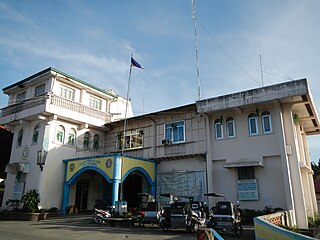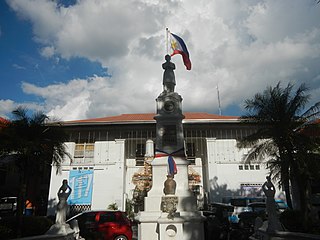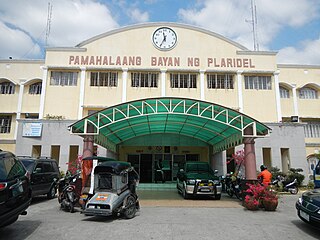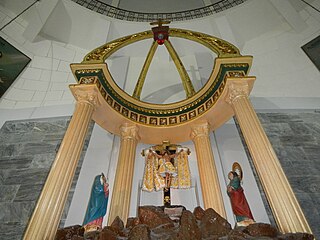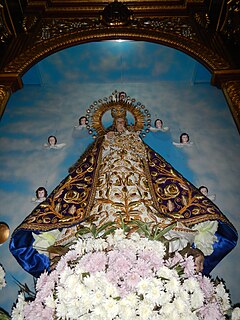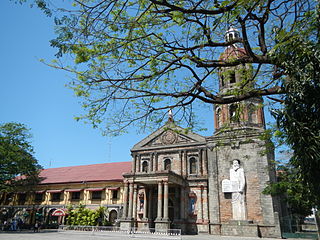A request that this article title be changed is under discussion. Please do not move this article until the discussion is closed. |
Baliuag Baliwág | |
|---|---|
| Municipality of Baliuag | |
(From top, left to right): Baliuag Museum and Library (Old Town Hall) • Baliwag Transit terminal • Baliuag Clock Tower overviewing the Baliuag Wet and Dry Market • Mariano Ponce house birthplace marker • St. Augustine Parish Church (Baliuag) | |
| Nickname(s): Buntal Hat Capital of the Philippines | |
| Motto(s): Dugong Baliwag, Pusong Baliwag (English: Baliuag by blood, Baliuag in my heart) | |
 Map of Bulacan with Baliuag highlighted | |
Location within the Philippines | |
| Coordinates: 14°57′N120°54′E / 14.95°N 120.9°E Coordinates: 14°57′N120°54′E / 14.95°N 120.9°E | |
| Country | |
| Region | Central Luzon (Region III) |
| Province | Bulacan |
| District | 2nd District |
| Founded | May 26, 1733 [1] |
| Barangays | 27 (see Barangays) |
| Government | |
| • Type | Sangguniang Bayan |
| • Mayor | Ferdinand Estrella (PDP-Laban) |
| • Vice Mayor | Christopher F. Clemente (NUP) |
| • Congressman | Gavini C. Pancho |
| • Electorate | 101,946 voters (2019) |
| Area | |
| • Total | 45.05 km2 (17.39 sq mi) |
| Population (2015 census) [4] | |
| • Total | 149,954 |
| • Rank | 19 out of 1,489 Municipalities |
| • Density | 3,300/km2 (8,600/sq mi) |
| • Households | 35,488 |
| Demonyms | Baliuageño (male) Baliuageña (female) Baliuagenean |
| Economy | |
| • Income class | 1st municipal income class |
| • Poverty incidence | 5.37% (2015) [5] |
| • Revenue | |
| • Assets | |
| • Expenditure | |
| Utilities | |
| • Electricity | MERALCO |
| Time zone | UTC+8 (PST) |
| ZIP code | 3006 |
| PSGC | |
| IDD : area code | +63 (0)44 |
| Climate type | tropical monsoon climate |
| Native languages | Tagalog Kapampangan |
Baliuag, officially the Municipality of Baliuag (Tagalog : Bayan ng Baliuag), is a 1st class municipality in the province of Bulacan, Philippines. According to the 2015 census, it has a population of 149,954 people. [4]
Contents
- History
- First Municipio
- Don Mariano Ponce
- Barangays
- Climate
- Demographics
- Religion
- Economy
- Major industries
- Major products
- Malls & supermarkets
- Local government
- List of former mayors
- Attractions
- Other attractions
- Transportation
- Education
- Tertiary Education
- Primary and Secondary Education
- Gallery
- See also
- References
- External links
Baliuag was founded in 1732 by Augustinian friars and was incorporated by the Spanish Governor-General on May 26, 1733. The town was a part of Quingua (now Plaridel) before.
Through the years of Spanish domination, Baliuag was predominantly agricultural. People had to depend on rice farming for the main source of livelihood. Orchards and tumanas yielded fruits and vegetables, which were sold in the public market. Commerce and industry also played important contributions to the economy of the people. Buntal hat weaving in Baliuag together with silk weaving popularly known in the world as Thai silk; the manufacturer of cigar cases, piña fibers, petates (mats), and Sillas de Bejucos (cane chairs) all of the fine quality became known in many parts of the world. The local market also grew. During the early part of the 19th century, Baliuag was already considered one of the most progressive and richest towns in Bulacan. The growth of the public market has significantly changed the model of the economy of the town.
Baliuag is the major commerce, transportation, entertainment, and educational center of Northern Bulacan. With the continuous expansion of Metro Manila, the municipality is now part of Manila's built-up area which reaches San Ildefonso in its northernmost part.























